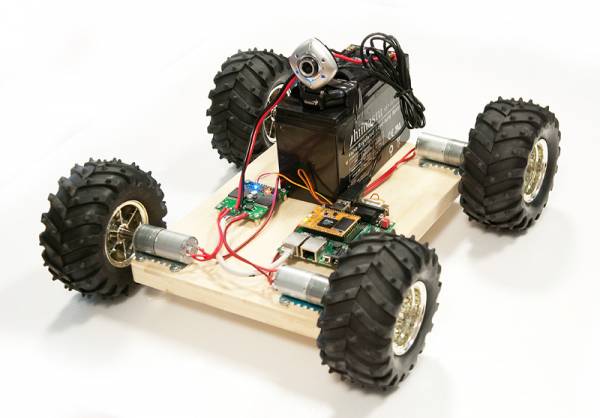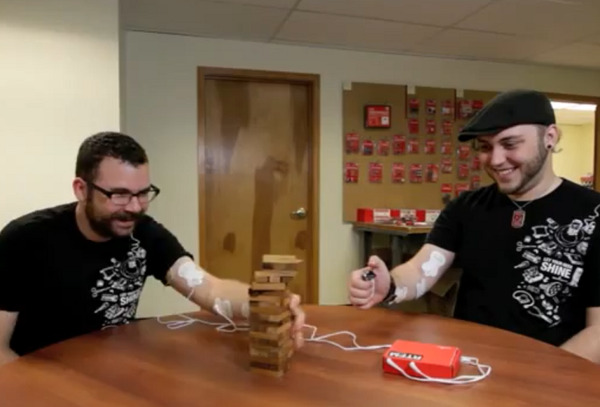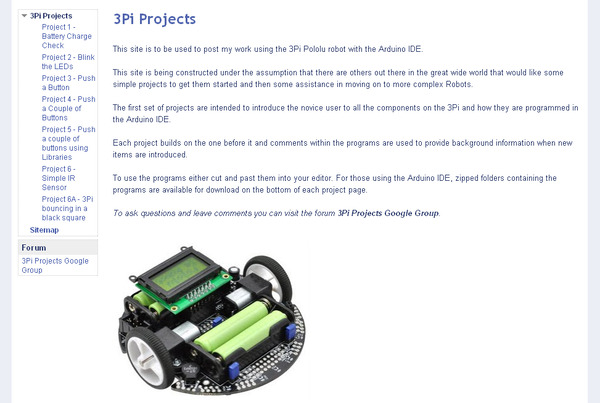Pololu Blog »
Pololu Blog (Page 88)
Welcome to the Pololu Blog, where we provide updates about what we and our customers are doing and thinking about. This blog used to be Pololu president Jan Malášek’s Engage Your Brain blog; you can view just those posts here.
Popular tags: community projects new products raspberry pi arduino more…
Remote Controlled Arduino Robot using Wixel Transceivers
This Instructable by TECHbitar shows how to build a robot controlled wirelessly via a pair of Wixels.
November 2011 update: new building, new machines
Five months ago, I wrote that we “just finished a big facility expansion that was taking up a lot of my attention this year, so I have some more time now …” Well, that turned out to be wrong. It’s also been over a year since I started this blog, and so far, I am way behind my target of an article per week. It doesn’t help when I don’t post for four months, but some exciting stuff has happened in that time. Continued…
Rocky the Robot
Rocky the Robot by Patrick McCabe has a chassis that is entirely contained within the profile of its Pololu Wheels. It also uses our gearmotors, distance sensors and battery holder. Patrick has a detailed writeup on his site.
Carambola Rover Platform
 |
Lithuanian electronics manufacturer 8 Devices built this example rover platform using several items that we carry, including a Pololu Qik 2s12v10 Dual Serial Motor Controller, as a chassis for their Carambola, an open-source and Linux-friendly embeddable module.
Simple 3pi Projects for the Arduino IDE
These projects by Daniel J. Sullivan are intended to introduce novice users to all the components on the 3pi robot and how they can be used while programming with the Arduino IDE. Each project builds on the one before it, and comments within the programs are used to provide background information when new items are introduced.
Continuous-rotation servos and multi-turn servos
As I discussed in the introduction to servos, one of the consequences of hobby servos’ intended use is that rotation range is limited to about 180 degrees. In this post, I will talk about two exceptions to this general rule: continuous-rotation servos and multi-turn servos. Each of these products loses some features in return for increased rotational range, so none of them are the ideal actuators many would like them to be. There are some specialty servos developed for robot applications that get around the limitations, but those servos are not as standardized and do not really fit into the hobby servo category, so I am not going into any more detail on those beyond mentioning that they exist. Continued…
Pololu Micro Serial Servo Controller Netduino driver
This Netduino driver by customer Stefan Thoolen supports both the MiniSSC2 and the Pololu protocol for controlling a Pololu Micro Serial Servo Controller.
"Mr. Twitchy" project featuring Wixels
 |
Mr. Twitchy is a project that uses two Wixels to wirelessly control an electrical stimulation device. The project was featured in Sparkfun New Product post.
"Blackbeard's Chest" animatronic display
Blackbeard’s Chest by SkullTroniX uses two jrk motor controllers with feedback to control linear actuators as part of a spooky animatronic display.
Low-cost hexapod
A Mini Maestro 24-channel USB servo controller controls three servos in each of this insectoid robot’s six legs. For more information, see this thread on the Trossen Robotics forums.




























